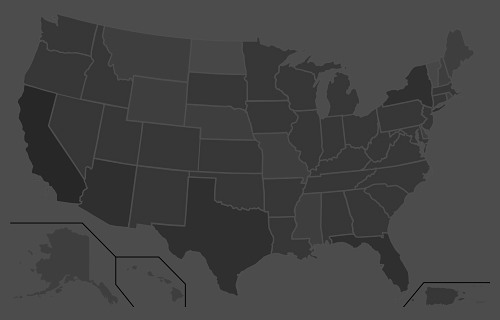“Our added winter moisture and active calling period led to a very long nesting and hatching season, starting in late April and extending into early summer, with chicks hatching as late as early July,” O’Dell said. “From a population standpoint, we are out of a deficit for the first time since 2001-2002. Quail are starting to pop up in places they haven’t been seen in a while.
“If you’ve never had the chance to experience what Arizona quail hunting built its name on, then this would be the year to get out and enjoy it.”
Meanwhile, hunters should note that the season for Mearns’ quail doesn’t begin until Dec. 4. It’s summer rainfall that plays a key role in nesting success and population numbers of this species. After a spotty and relatively weak monsoon across southern Arizona, these birds are likely to be abundant only in pockets that received sufficient precipitation this summer.
A valid Arizona hunting or combination hunt and fish license is required for all hunters 10 and older. Those hunters under 10 must either have a valid hunting or combination hunt and fish license, or be accompanied by an adult who possesses a valid hunting or combination hunt and fish license. Licenses can be purchased online or at license dealers statewide. A youth combination hunt and fish license (ages 10 to 17) is $5.
The general bag limit is 15 quail per day in the aggregate, of which no more than eight may be Mearns’ quail (when the Mearns’ season opens Dec. 4). The general possession limit is 45 quail in the aggregate after opening day, of which no more than 15 Gambel’s, scaled or California quail in the aggregate may be taken in any one day. After the opening of the Mearns’ season, the 45-quail possession limit may include 24 Mearns’ quail, of which no more than eight may be taken in any one day.
More quail-hunting information can be found on the department’s website at https://www.azgfd.com/Hunting/. Another resource for both new and experienced hunters alike is “An Introduction to Hunting Arizona’s Small Game.” Written by Randall D. Babb, the 196-page, full-color book covers where and how to hunt small game birds (like quail), squirrels, rabbits, ducks and geese. It also includes how to prepare and cook your harvest, with illustrations and recipes. The book can be ordered for $16.95 at www.azgfd.gov/publications.
Finally, hunters should check out O’Dell’s techniques for field-dressing quail at https://www.youtube.com/watch?v=3gRwZAcWzzk.
####
Publishers Notes: OUT OF STATE HUNTERS, FISHERMEN & OUTDOOR ENTHUSIASTS; Due to the Covid 19 pandemic, there could be limitations for OUT of STATE hunters, fishermen and other outdoor enthusiasts to include a 14-day quarantine requirement or negative COVID-19 testing alternative. Please check with the State's Department of Natural Resources BEFORE you travel or apply for the 2020 Fall Hunts.
Disclaimer: The views expressed on this site are that of the authors and not necessarily that of TBC Press
Texas 2021 Red Snapper Fishing Closed in State Waters
Submitted by: TBC Press
Posted on: 11/15/21
The Backcountry Press
The country's premier daily HUNTING, FISHING & OUTDOOR news in the USA and around the globe. Read whats happening in your neck of the woods & beyond.
© 2020 TBC Press - All Rights Reserved Website Design by:
News # 14632
The Texas Parks and Wildlife Department (TPWD) will close red snapper fishing in state water November 15. In January 2022, TPWD will reopen red snapper fishing in state waters while federal water will remain closed until the summer.
Under an agreement between TPWD and the National Marine Fisheries Service (NMFS), TPWD can establish the opening and closing dates of the annual red snapper fishery in federal waters while also continuing to manage red snapper fishing in state water. As part of this agreement, however, Texas must close the entire fishery when the state’s allotted poundage is reached for the year.
Traditionally, TPWD has provided for a year-round red snapper fishing season in state waters and a limited red snapper fishing season in federal waters that begins in June and closes after a certain number of days. The length of the season in federal waters has been calculated to allow for a year-round season in state waters while remaining under the allotted annual catch limit applied to landings from state and federal waters combined.
Unfortunately, in August of 2020 NMFS notified Texas that they believed Texas had exceeded the annual catch limit in 2019. Upon finalization and extensive review of all the data collected, it was determined that Texas exceeded its allotted poundage, by approximately 62,000 lbs.
As a condition of the agreement whereby states have more control to set seasons for the private recreational fishery in their state, the red snapper pounds that exceeded the annual catch limit must be paid back. In 2020, Texas filed a lawsuit challenging NMFS’ implementation of a payback to address an overage of the Texas catch limit from 2019 until all of the differences in calculation and any other issues that caused the differences could be determined.
For 2020 and beyond, TPWD has attempted to streamline, further automate and alter some of the reporting processes to prevent any future data issues that had occurred in 2019. TPWD will continue to work with NMFS to ensure that both entities are using the same approach to calculate landing estimates so there will not be future discrepancies in the calculations.
“Last year, TPWD challenged the rule and methodology NMFS used to calculate the amount of red snapper landed by private anglers in Texas,” said Robin Riechers, TPWD’s Coastal Fisheries Division Director. “While we were trying to determine and resolve the differences in TPWD and NMFS estimates, we allowed Texas anglers to fish for red snapper. Per our agreement with NMFS it is now the time for us to address those overages in order to preserve as many days as we can for red snapper fishing in 2022.”
Results from the Harte Research Institute’s The Great Red Snapper Count estimate there are 22 million red snapper in state and federal waters off of Texas and 118 million in the Gulf of Mexico. This study provided an overall abundance estimate as opposed to the previous estimate of approximately 36 million red snapper in the Gulf. This finding certainly helps to support that red snapper abundance off of Texas is robust and supports what many anglers have been telling us.
“Moving forward, TPWD hopes that the Gulf Council will utilize the results from The Great Red Snapper Count to better manage and sustain red snapper populations in Texas,” said Carter Smith, Executive Director of TPWD. “While we are disappointed that we have to close state waters this year, we continue to support the state-based management and stewardship of red snapper and to provide as many fishing opportunities as possible to anglers without adversely impacting this important fishery.”
####












